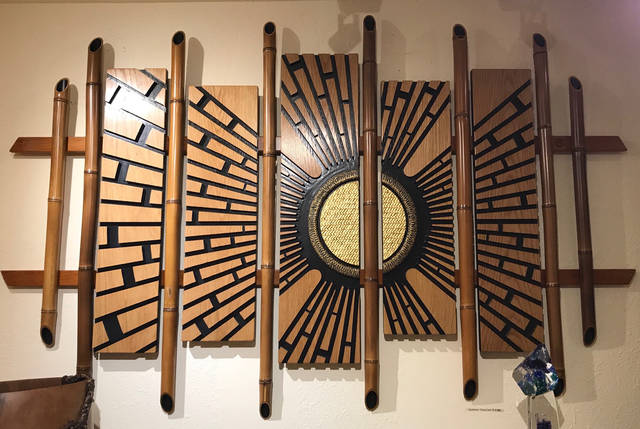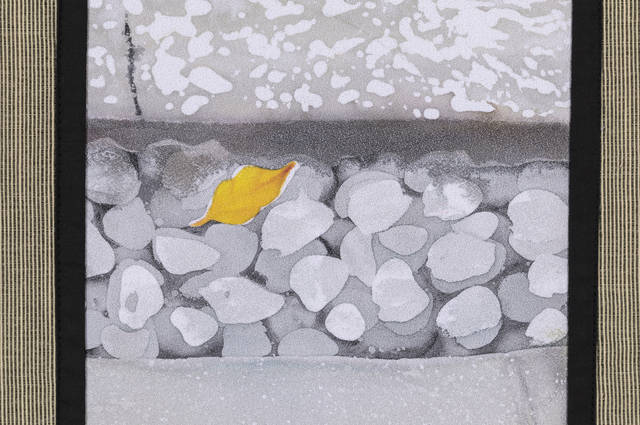Kahilu Theatre Galleries presents an artistic fusion of eastern art form in its new exhibit, “Confluence East,” featuring Hawaii Island artists Ellen Crocker and the late Cal Hashimoto. The selected works include sculpture, paintings and mixed media in the art disciplines of Japan. The exhibit opens today with an opening reception from 5-7 p.m., and runs through March 29 in Waimea.
“Confluence” East is defined as the place where two rivers meet. Hashimoto and Crocker began considering a joint art show in 2016 when they acknowledged their shared passion for the art disciplines of Japan. Hashimoto was widely recognized for his bamboo sculpture and Crocker for her work with Japanese ink brush, watercolor, carving and Japanese batik.
“The Kahilu Exhibition Committee was interested that both Ellen Crocker and Cal Hashimoto had a passion for traditional art disciplines of Japan,” said Sally Lundburg, exhibit coordinator for Kahilu Theatre. “Each conducted extensive research and intensive practice in these disciplines. The confluence of their interests, as well as the diversity of their materials and methods, make a wonderful exhibition.”
A combined exhibition was first suggested a few years ago by local ceramic artist, Janice Bovard. She urged both Crocker and Hashimoto to submit a proposal to Kahilu Theatre. When Hashimoto passed away in 2017, Boyard became executor of his artwork and has contributed significant support in bringing this exhibit to life.
“Our goal as an exhibition program at Kahilu Exhibits is to feature both emerging and established visual artists,” said Lundburg. “We encourage the visual arts to be a catalyst for creativity and growth.”
Both students of traditional art disciplines of Japan, Crocker and Hashimoto are skilled practitioners whose work is distinguished by their personal talents.
“Crocker and Hashimoto bring original thinking and unique approaches that have been central to their accomplished practices, and we are pleased to feature their work together in Confluence East,” said Lundburg.
One of Crocker’s works in the exhibition is a piece entitled, Kosmos. The large, hand relief carved mixed media painting is comprised of six wooden panels 39 inches high, and it extends nearly 7 feet.
“Kosmos represents the order and beauty of things to me.” says Crocker. “It was designed, drawn and carved in the weeks prior to my youngest sons’ marriage. I was in motion, physically and emotionally, watching my son move into the world of marriage, full of change and recognizing a passing of a time in my life and at the same time a new path was appearing. Circles have always been instrumental in my work.”
Another impressive piece is Hashimoto’s expansive wall sculpture, Rising Sun, which spans the east wall of Kahilu’s Hamakua Gallery. The work measures 40 inches high by 65 inches wide, and is constructed of uniquely joined koa, bamboo, and oak.
Before he died last year, Hashimoto had this to say about his work with bamboo:
“I realized that there was very little technical information about how to work with bamboo,” he said. “I started to experiment with what was known about different species, harvesting and curing procedures, preservation processes, and utilized even those vague references to working procedures. After numerous attempts and failures, I began to establish an understanding of bamboo’s unique working characteristics and limitations.”
The Kahilu Theatre Galleries exhibitions are free and open to the public. They are open 9 a.m. to 1 p.m. Monday through Friday, and during all performances at the theatre.
Info: Visit www.kahilutheatre.org/exhibits or call 885-6868.


